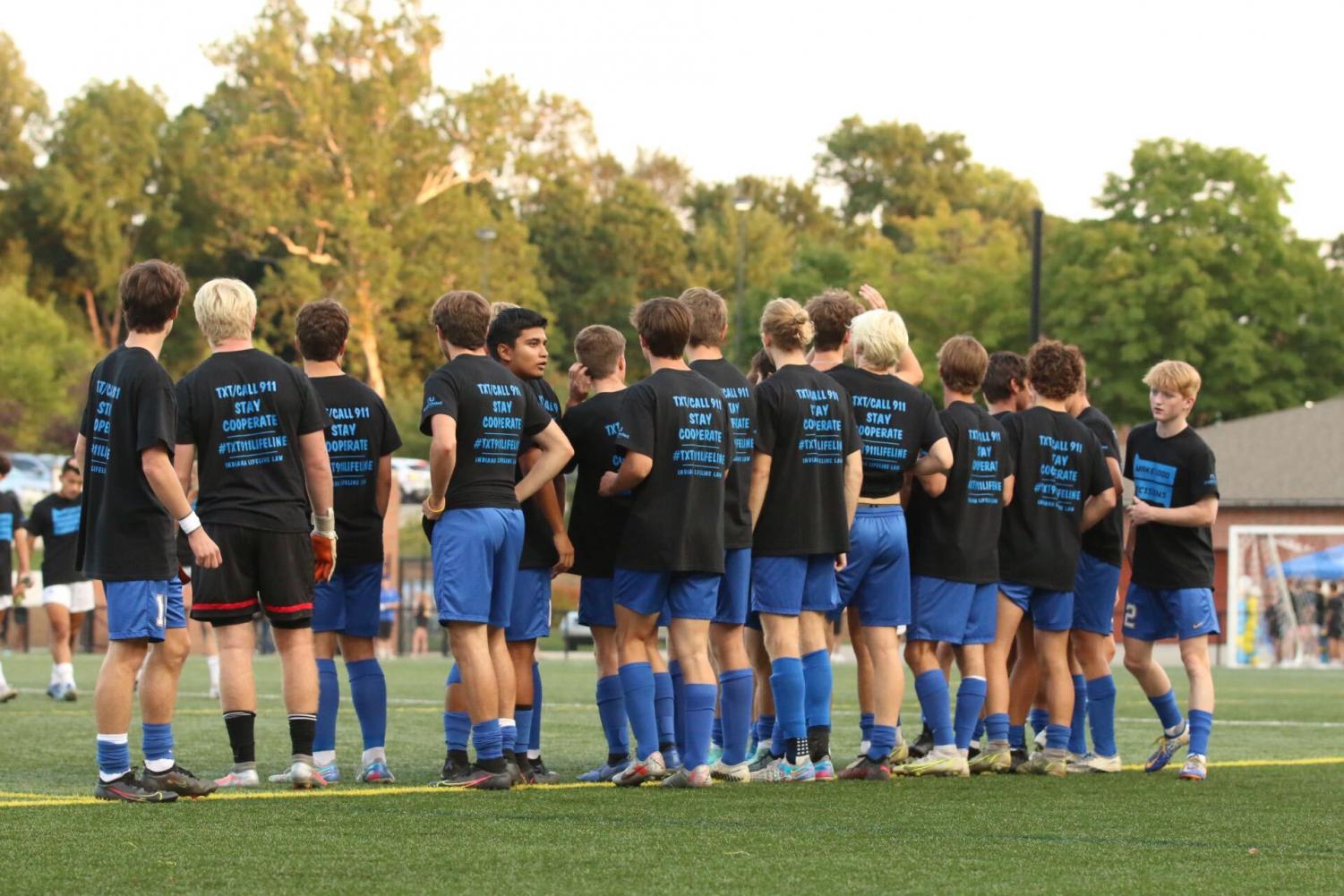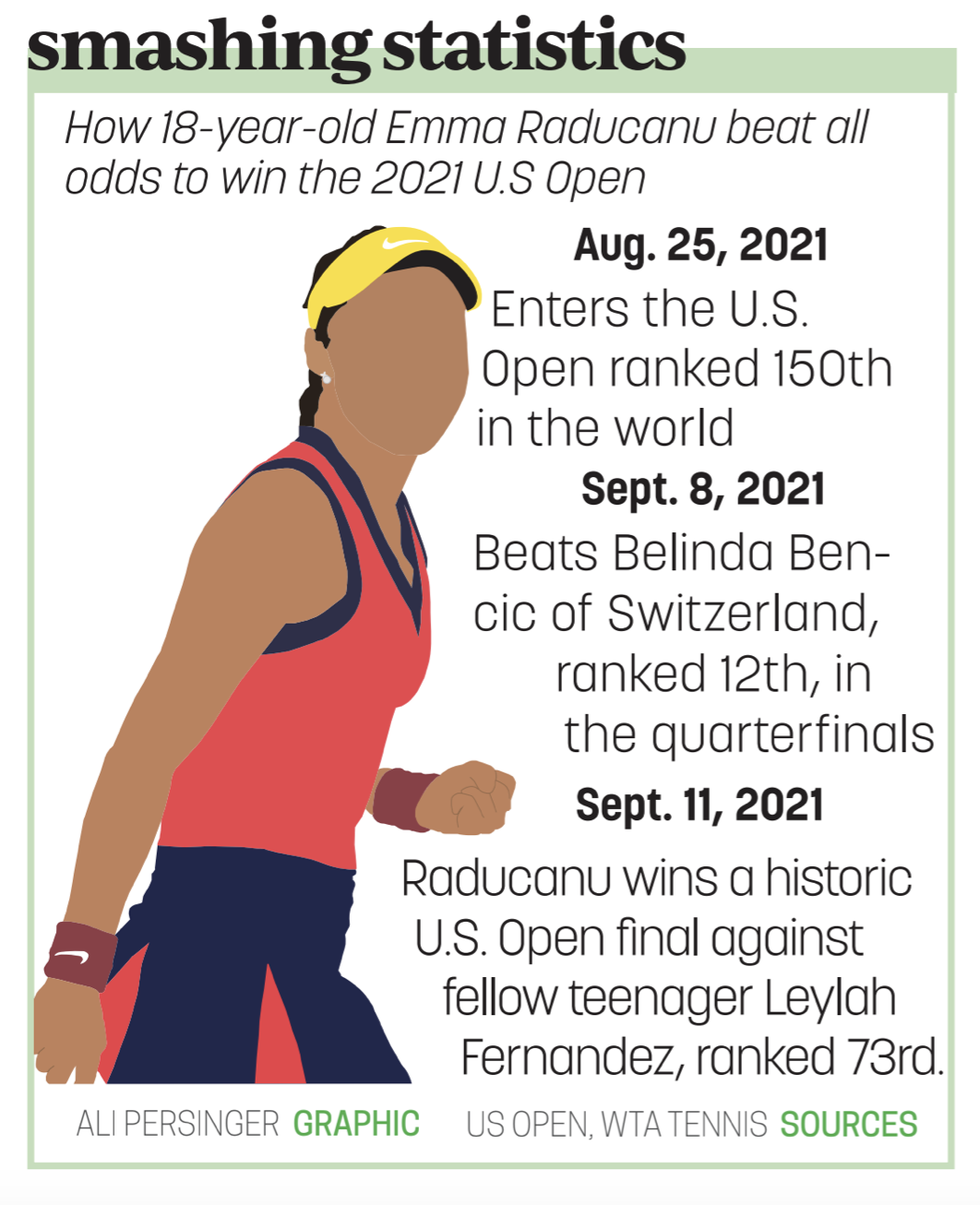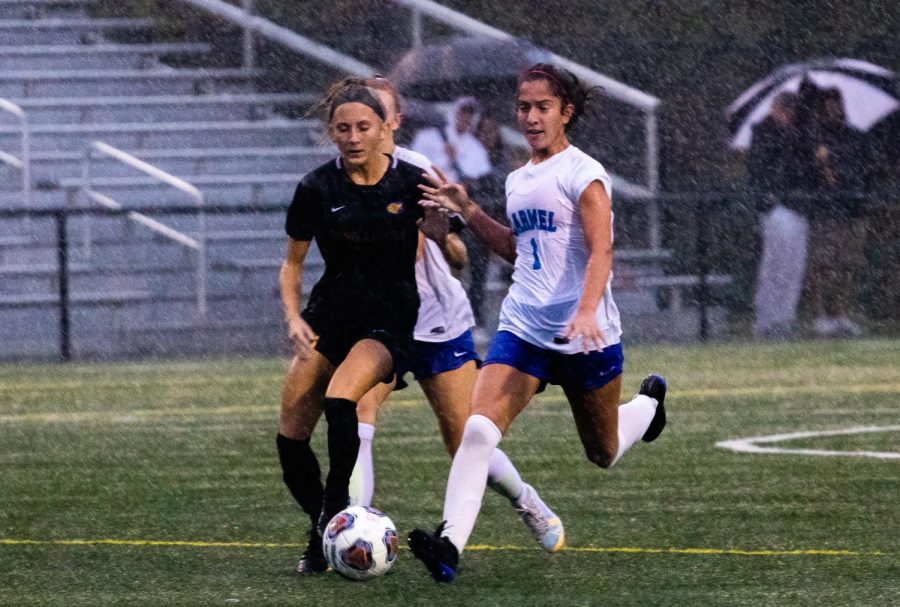On Sept. 11, 2021, 18–year-old Emma Raducanu and 19-year old Leylah Fernandez played each other in the final of the U.S. Open. Ranked 150th and 73rd respectively by the Women’s Tennis Association, Raducanu and Fernandez were barely known when they entered the competition, and they weren’t expected to make it very far. By the end of the competition however, they found themselves in the first all-teenage final in a major competition since 1999.
To make it to the final, Fernandez defeated three women ranked in the top 10, including Naomi Osaka, the defending U.S. Open champion.
With that said, two low-ranked players facing each other in a major final raises questions about the significance of rankings.
For his part, Shane Schmidt, head coach of the men’s soccer team, said he does not pay attention to rankings.
“It’s nice, I guess, to have a little bit of a measuring stick to see what other coaches think of where your team might be, but I don’t put a whole lot of backing in behind it and we don’t ever really talk about the rankings,” he said. “I mean everybody usually knows where we rank, but it’s not anything that we use for motivation or anything like that.”
According to Schmidt, soccer teams are ranked in two ways.
“There’s the MaxPreps rankings that use algorithms that figure out things like strength of schedule, opponents, wins, losses, all these different mathematical equations that factor in,” he said. “There’s also the Indiana Soccer Coaches Association Poll (ISCA). The way it works is that every Saturday afternoon Rob Jordan who’s the soccer coach at Zionsville sends out all the results. There’s like four or five different coaches in each of the four districts that all vote and it gets compiled and then the teams get put into place.”
Schmidt added that the ISCA rankings were more commonly used in the media, and that he is one of the voters.
Frank Dixon, head coach of the women’s soccer team, said via email that the ISCA rankings tend to be fairly accurate but have some flaws.
“Rankings can be skewed by the voters in the poll group. Many coaches don’t even see all the top teams in their area of the state, so they have to trust the other pollster’s recommendations,” Dixon said. “This can lead to some overranking at times.”
Lucia “Luci” Bair, member of the varsity women’s soccer team and senior, said she agreed.
“For us I think there’s some teams that are ranked higher than us and I don’t think it has any correlation with the fact that they’re better than us exactly,” she said. “When we play teams that are (ranked) higher than us there’s more motivation to bring our A-game.”
Dixon said, “I have never heard one of my girls mention the team’s ranking but I’m sure many of them track it. My guess would be that it increases the pressure on players to prove they belong in the Top 20. This is why we seldom mention it, as a coaching staff, to our players.”

While Schmidt and Dixon don’t put much emphasis on rankings, both said they do use game analytics to enhance their training and strategy.
Schmidt said, “We have (our game analytics) broken down through a program called Huddle, and then they give us all the analytics to the games and we use that in our training.”
Dixon said the team trains using statistics from game tapes.
“This includes almost everything you can think of in a soccer game: goals, assists, positive and negative passes, shots on goal and many others. We don’t train based on ranking position but I’m sure other teams use rankings to get their players to try to upset a ranked team,” he said.
Overall, Schmidt and Dixon agreed that rankings are more for entertainment purposes and should not be taken too seriously.
Dixon said, “We coaches look at rankings as a fun method of bringing attention to our sport. We hope they are fair and as accurate as possible, but more importantly we want communities to talk about the success of their high school teams.”


































![AI in films like "The Brutalist" is convenient, but shouldn’t take priority [opinion]](https://hilite.org/wp-content/uploads/2025/02/catherine-cover-1200x471.jpg)









































![Review: “The Immortal Soul Salvage Yard:” A criminally underrated poetry collection [MUSE]](https://hilite.org/wp-content/uploads/2025/03/71cju6TvqmL._AC_UF10001000_QL80_.jpg)
![Review: "Dog Man" is Unapologetically Chaotic [MUSE]](https://hilite.org/wp-content/uploads/2025/03/dogman-1200x700.jpg)
![Review: "Ne Zha 2": The WeChat family reunion I didn’t know I needed [MUSE]](https://hilite.org/wp-content/uploads/2025/03/unnamed-4.png)
![Review in Print: Maripaz Villar brings a delightfully unique style to the world of WEBTOON [MUSE]](https://hilite.org/wp-content/uploads/2023/12/maripazcover-1200x960.jpg)
![Review: “The Sword of Kaigen” is a masterpiece [MUSE]](https://hilite.org/wp-content/uploads/2023/11/Screenshot-2023-11-26-201051.png)
![Review: Gateron Oil Kings, great linear switches, okay price [MUSE]](https://hilite.org/wp-content/uploads/2023/11/Screenshot-2023-11-26-200553.png)
![Review: “A Haunting in Venice” is a significant improvement from other Agatha Christie adaptations [MUSE]](https://hilite.org/wp-content/uploads/2023/11/e7ee2938a6d422669771bce6d8088521.jpg)
![Review: A Thanksgiving story from elementary school, still just as interesting [MUSE]](https://hilite.org/wp-content/uploads/2023/11/Screenshot-2023-11-26-195514-987x1200.png)
![Review: "When I Fly Towards You", cute, uplifting youth drama [MUSE]](https://hilite.org/wp-content/uploads/2023/09/When-I-Fly-Towards-You-Chinese-drama.png)
![Postcards from Muse: Hawaii Travel Diary [MUSE]](https://hilite.org/wp-content/uploads/2023/09/My-project-1-1200x1200.jpg)
![Review: "Ladybug & Cat Noir: The Movie," departure from original show [MUSE]](https://hilite.org/wp-content/uploads/2023/09/Ladybug__Cat_Noir_-_The_Movie_poster.jpg)
![Review in Print: "Hidden Love" is the cute, uplifting drama everyone needs [MUSE]](https://hilite.org/wp-content/uploads/2023/09/hiddenlovecover-e1693597208225-1030x1200.png)
![Review in Print: "Heartstopper" is the heartwarming queer romance we all need [MUSE]](https://hilite.org/wp-content/uploads/2023/08/museheartstoppercover-1200x654.png)




